#ladies of leisure 1930
Explore tagged Tumblr posts
Text

Forty-five (now forty-six) films into Barbara Stanwyck’s filmography and I still get completely stunned by the absolute talent on the screen! Ladies of Leisure is a 1930 pre-code directed by the legendary Capra, the proper debut of Stanwyck, and she’s just marvelous. Decades ahead of her competition in talent and style. One of the great naturalistic talents of all time, and here she is, 1930, primed for stardom.
56 notes
·
View notes
Text
Happy Pride
I want to wish a happy Pride to:
Vests
The vest is an iconic lesbian wardrobe staple. For a long time, lesbian fashion has incorporated staples of working-class men's clothing because they are practical and unpolished, which is not typical of women's fashions, and therefore it challenges gender norms. Vests can be formal or casual, they are familiar yet subversive when worn by women, thus making them a lesbian standard.
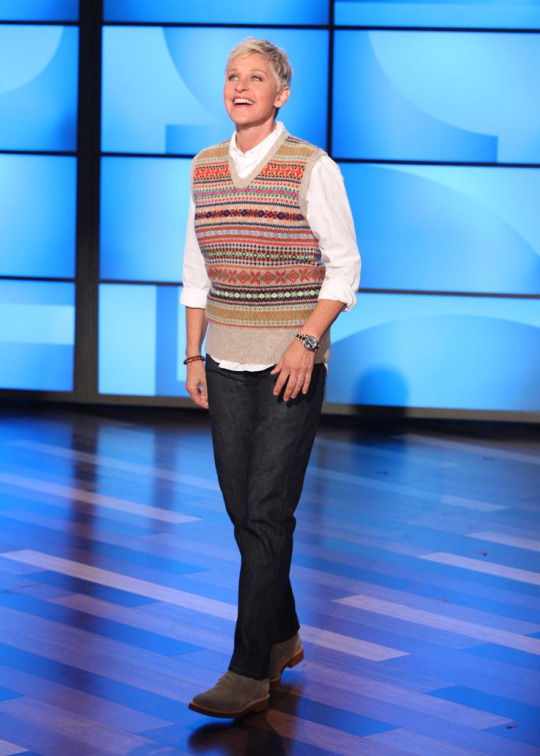
Frog and Toad
These cottagecore gays are good role models of a loving queer relationship. The first Frog and Toad book was published in 1970. In 1974, the author Arnold Lobel came out as gay to his family. Arnold's daughter has said, “I think ‘Frog and Toad’ really was the beginning of him coming out” because they're “of the same sex and they love each other.” So yes, Frog & Toad are a gay couple.
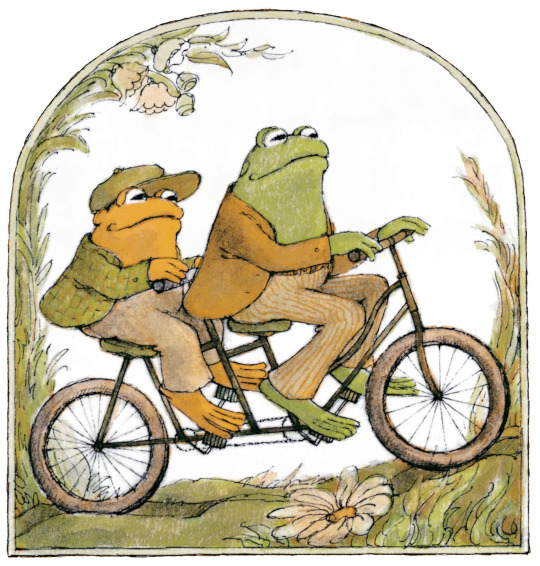
Cake
In the 1990's and early 2000's, a popular dessert was the Better Than Sex Cake, which was a rich chocolate cake. Well, when you're asexual, the name of that cake hits a little different. In 2004, asexuality.org (AVEN) started using cake as a symbol of asexualness since they believe cake IS better than sex. Asexuals may not have much of an appetite for sex, but that does not mean they have no appetites, thus the popular phrase "I'd rather have cake."

Limp Wrists
Why do we associate a limp wrist with male homosexuality? The ancient Romans viewed limp wrists as effeminate, and the association was further strengthened in the 17th & 18th centuries as one hand with a limp wrist and the other hand placed on the hip in an "I'm a Little Teapot" pose was seen as something men in the royal courts would do, and that sort of leisurely life was considered unmanly. In the modern era queer men have been seen as effeminate, so the limp wrist became associated with them. This association was embraced and reclaimed by queer men, and the wider queer community as a whole.
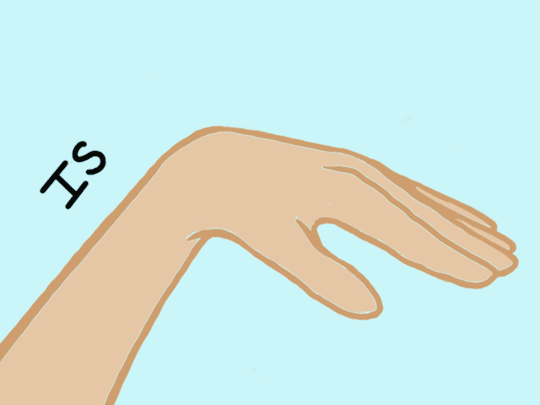
Unicorns
Unicorns have been used in art since the 4th century BCE and it was the Victorians who firmly linked unicorns with rainbows. In 1978, Gilbert Baker created the rainbow flag as a joyous symbol of the queer community. Given that rainbows and unicorns are so intrinsically linked, it’s unsurprising that the mythical creature started to also be used as a symbol for LGBTQ+ people.

Pansies
“Daisy,” “buttercup,” and especially “pansy,” are flowers which have been used to mean a “flamboyant gay man.” Sometimes the word "pansy" has been positive, sometimes definitely not. In the 1920's & 1930's, the underground clubs of the Prohibition era became a hotspot for queer nightlife with drag queens becoming hugely popular entertainment even among the straight clientelle, and this became known as the "Pansy Craze" in reference to the colorful clothing the performers wore. In 2013, because of the association the pansy has to queer people, a group of people in Atlanta used them to block out hatred by putting cardboard pansies on poles tall enough to block the protesters’ signs, and voila, the Pansy Patrol was born.

Queer Sitting
Improperly sitting is one of many seemingly arbitrary traits (like walking fast and being unable to drive) that the online queer community has claimed as part of queer culture, but it's deeper than it seems. Girls are often taught to sit like a lady, such as keeping their knees pressed together, therefore an act of rebellion can be a woman sitting incorrectly. By not sitting properly, it's a rejection of rules about what we can do with our bodies. In movies & television, for decades censorship codes worked to silence queer voices, and creators developed sophisticated ways of coding queerness through body language, such as the way a character sits. Queer sitting resists the process of assimilation and instead says: do what feels right, do with your body what you would like, not what you are told is proper.
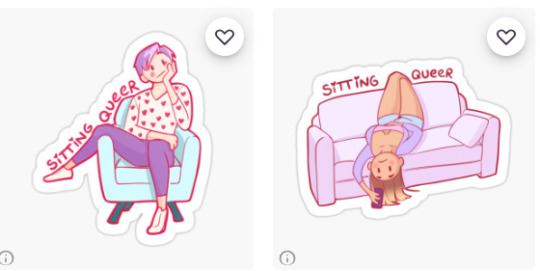
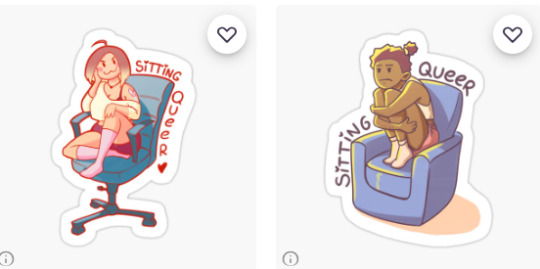
RuPaul's Drag Race
Many of us in the queer community take RuPaul's Drag Race for granted with its 15+ seasons, multiple Emmy wins, spin-offs like All Stars & Secret Celebrity, 15 different international versions, a successful Las Vegas show, and the many memes and catchphrases that have come from the show. It’s easy to forget in the 2000's things were very different. There were gay characters on TV and reality shows like Survivor had openly gay contestants, but until RuPaul’s Drag Race premiered in 2009 there wasn’t a truly successful series made by queer creators, starring queer cast members, and made specifically for a queer audience.
RuPaul's Drag Race brought drag performance to a large audience and presents topics traditionally considered taboo on television, such as that it's okay to not conform to societal expectations around gender and sexuality. The show has spread awareness and acceptance as it provides positive representation of queer people and humanizes us as it showcases the struggles of gay, lesbian, gender-nonconforming and transgender people and as the contestants tell stories of coming out, being affected by HIV/AIDS, being rejected by their families and attacked in the streets.
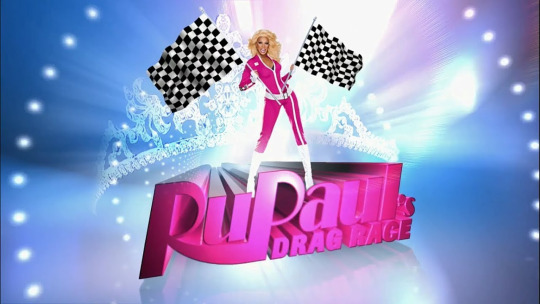
Quiche
in Anglo-American culture, French cuisine is not viewed as "manly" food, which is the first mark against quiche. During the 1970s, quiche was served at brunch spots frequented by gay men which led to it being seen as a quintessentially queer dish, another mark against this food. Quiche became seen as so effeminate that a 1982 best-selling book satirizing masculine stereotypes was titled Real Men Don't Eat Quiche. Instead of the French name "quiche," if it had been called "scrambled egg pie" it likely wouldn't be considered a food for women and the gays, which just goes to show how lame it is to think of food as gendered in some way, but as long as they keep serving it for brunch, we'll keep eating it

Tumblr
Tumblr is known as "queerest place on the internet" and as a platform that "queer[ed] an entire generation." According to Tumblr, the people who use its site are 193% more likely to be LGBTQ compared to those on TikTok, Facebook, Instagram, Snapchat, Reddit, Twitter, and Pinterest. Tumblr estimates that 1 in 4 of its users identifies as LGBTQ. An important reason for this is that Tumblr does not require identity cues to be featured, such age, gender, location, relationship status or legal name, which allows users control over their self-presentation and makes it far less likely family and friends may discover their Tumblr account. This privacy allows queer people on Tumblr to feel more comfortable exploring and expressing their queerness.
Tumblr has been a place of important contributions to queer culture. One example is the large number of queer Pride flags which were first introduced and adopted on Tumblr:
In 2010 Jasper V. introduced his design for a Pansexual flag on Tumblr.
The Polysexual flag was created in 2012 by a Tumblr user named Tomlin.
The Genderfluid flag was created by agender Tumblr user JJ Poole in 2014.
The Agender pride flag was designed by Salem X in 2014 on Tumblr.
The Aromantic flag was created and posted by Tumblr user cameronwhimsy in 2014.
The omnisexual flag was designed in 2015 by Tumbler user pastelmemer.
Tumblr user 2Sanon posted a 2 Spirit flag in 2016.
In 2018 a nonbinary lesbian Tumblr blogger named Emily Gwen introduced the Sunset Lesbian flag to be inclusive of butch, trans, and enby lesbians.

38 notes
·
View notes
Text

Marie Prevost, director Frank Capra, and Barbara Stanwyck during production of LADIES OF LEISURE (1930)
30 notes
·
View notes
Text

New-to-me movies seen in 2024: Ladies of Leisure (1930)
"When a dress costs over a hundred bucks, it's a frock!"
8 notes
·
View notes
Text



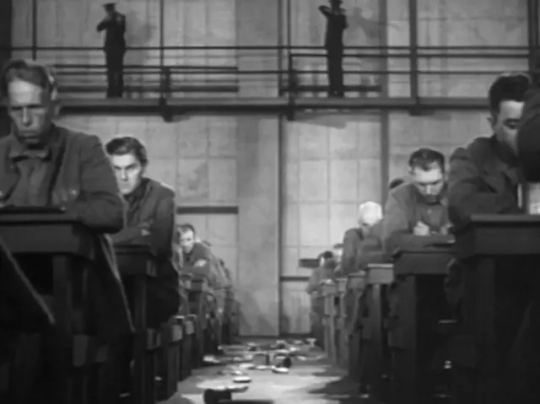


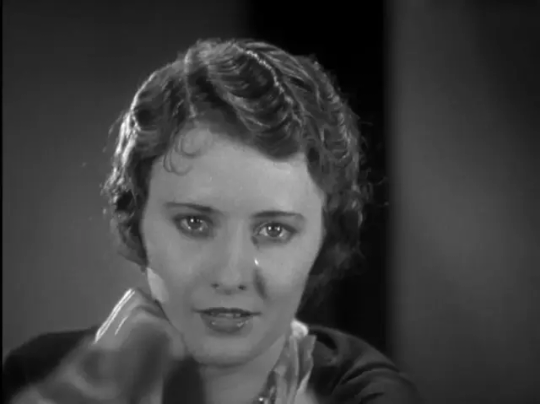

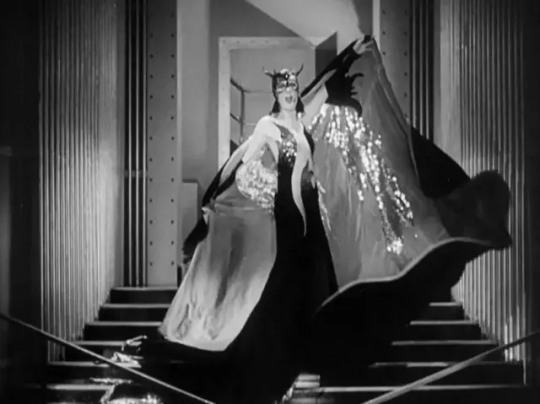

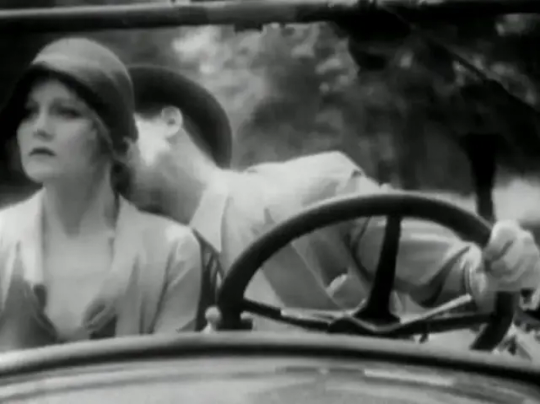
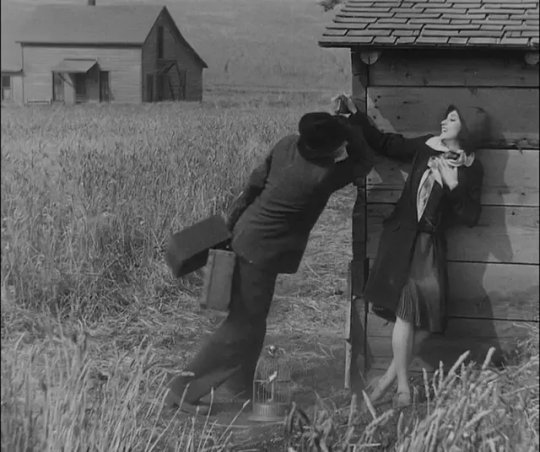
my Top Ten By Year Zine: 1930 is now on sale! i am not expecting any traction here but i figured what the hell! i have spent the last many months working on this 20-page zine dedicated to a year from one of film history's most fascinating micro-eras (Sound Gets Situated). having ten films to write about is both a jumping off-point and culmination but it's about so much more than that. it's about traversing through a year in film to the best of my ability, picking up memories and observations along the way. this zine features original collage work on every page, an essay, memories across over 50 films from 1930, and writing on 10 films of my choosing (people on sunday, city girl, king of jazz, madam satan, "dance of the hands", the big house, au bonheur des dames, ladies of leisure, laughter, and liliom). this is a labor of love for anyone who loves or appreciates film.
#lillian roth#marx brothers#film#hollywood#louise brooks#liliom#frank borzage#charles farrell#nancy carroll#fredric march#tilly losch#dance of the hands#dance of her hands#movies#zine#collage#zines#silent film#f.w. murnau#fw murnau#mary duncan#city girl#greta garbo#james cagney#barbara stanwyck#frank capra#ladies of leisure#chester morris#wallace beery#robert montgomery
13 notes
·
View notes
Text

Marie Prevost-Johnnie Walker-Barbara Stanwyck "Mujeres ligeras" (Ladies of leisure) 1930, de Frank Capra.
20 notes
·
View notes
Text

Ralph Graves and Barbara Stanwyck in Ladies of Leisure (Frank Capra, 1930)
Cast: Barbara Stanwyck, Ralph Graves, Lowell Sherman, Marie Prevost, Nance O'Neil, John Fawcett, Juliette Compton, Johnnie Walker. Screenplay: Jo Swerling, based on a play by Milton Herbert Gropper. Cinematography: Joseph Walker. Art direction: Harrison Wiley. Film editing: Maurice Wright. Music: C. Bakaleinikoff.
Barbara Stanwyck's mastery of timing and inflection and her sheer camera presence made her a star, and Frank Capra's Ladies of Leisure was one of the first films to showcase what she could do. It's an engaging film at the start, with Stanwyck as Kay Arnold, tossing off snappy banter with Dot Lamar (Marie Prevost), her roommate and fellow "party girl." Soon there's a meet-cute with Jerry Strong (Ralph Graves), a rich guy who wants to be an artist. He asks Kay to model for him, and even though he's sort of engaged to a woman of his society set and his family disapproves of her indiscreet past, they fall in love. That's when the movie bogs down into sentimentality, Capra's fatal flaw. The only thing that holds it together is Stanwyck's obvious total commitment to making the character work. It's too bad that her leading man isn't capable of making a similar commitment -- Graves just looks a little flummoxed at what happens. Still, there's some breathless and implausible eleventh-hour suspense to liven things up at the end.
4 notes
·
View notes
Note
for the ask game, how about 1929 through 1935 (beginning of talkies through beginning of production code)!
hi friend! oooo i love this prompt!
1929 - the last of mrs. cheyney. i totally thought i had seen more films from this year, but it turns out it was just this mediocre norma shearer film that was remade with joan crawford in 1937... the remake is better but not by much!
1930 - ladies of leisure. when barbara stanwyck cries, i cry
1931 - private lives. both norma shearer and robert montgomery are extremely hot in this one!!
1932 - smilin' through. another norma shearer film! she's gorgeous and gives a fantastic performance in this one. another dual role (similar but kinda-not-really to lady of the night) too which is insane! honorable mention to grand hotel.
1933 - dancing lady. joan crawford is so beautiful in this one.. pretty good rom-com too! clark gable angrily massages joan's knee and it's very endearing <3
1934 - it happened one night. a classic, need i say more
1935 - i live my life. have not seen many movies from this year, so i picked a mediocre joan crawford film, but she is positively radiant and she throws a fantastic temper tantrum in the last act <3
thank you!! <3
5 notes
·
View notes
Text
Film History: Pre-code films
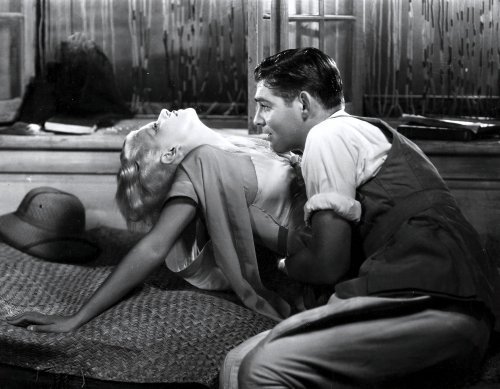
The pre-code era represented a radical change in the role of women in cinema. Undoubtedly, the new female protagonism was not attributable to a sudden interest in the figure of women in society, nor by the search for equality, not even by a current of socio-cultural thought that sought renewal, in this regard , of the American arts.
The studios simply used women to find enough sensationalism, morbidity and scandal to bring more audiences to theaters. It is evident that, despite the fact that economic gain was sought more than artistic quality, the end result was that many actresses became real movie stars, gaining a prominence, in many cases, greater than that given to male roles , and even, as we will see later, an actress even saved a major studio from bankruptcy.
There were many films that directly or indirectly addressed issues related to adultery, although perhaps it was the Metro Goldwyn Mayer film "The Divorcee" from 1930, the first to address the issue directly, creating a stir among the most popular conservative sector of American society.
The protagonist (Norma Shearer), deceived by her husband, decides to take revenge by sleeping with her best friend. Her performance earned her an Oscar. Curiously, this film was produced by Irving Thalberg, promoter of the first code and one of the most interesting characters in Hollywood of those years.
Returning to what the film's premiere meant at that time, there were two details that triggered the outrage of the "conservative sector"; firstly, that it was precisely one of the authors of the code who produced a film that openly violated it and, secondly, that the attitude adopted by the character of Shearer was certainly shameless and seemed to convey the following message: "if a man can be unfaithful why shouldn’t a woman flirt with whoever she wants.” Of course, after being divorced and conquering man after man, she regretted that behavior and returned to her husband, whom she had never stopped loving.
Norma Shearer herself, again produced by her husband, would soon release "A free soul", 1931. This film tells how the daughter of an important lawyer begins an intense sexual relationship with a gangster played by Clark Gable (in which what would be his first major role). Another twist on what, according to the code, should not be shown in the movies.
Also in 1931 would be released "Night Nurse", a classic film of the pre-code era, with gangsters, and a sexuality that floods the entire film with numerous scenes in which nurses appear in underwear.
But the most relevant thing about "Night Nurse", apart from serving as an example of a pre-code film, is that it was one of the first leading roles of the great Barbara Stanwick. Actress full of strength, talent and charisma, she was undoubtedly the most important Hollywood star of those early 30's. Before “Night Nurse” she had already shot “Illicit” 1931 (Illicit) and “Ladies of Leisure” 1930 (Light Women ) her first film with Frank Capra, with whom she would be very prolific during the 1930s and 1940s. Her enormous versatility led her to appear in genres as diverse as comedy, western, melodrama or film noir.
Apart from Capra, she worked for the best directors of the time; Howard Hawks, Cecil B. de Mille or Fritz Lang were lucky to have her in some of their casts. In 1933 she would participate in "Baby face" (Angel's Face) undoubtedly one of the most extravagant and lascivious films of the pre-code era. In it we are introduced to a licentious, sordid Barbara Stanwyck full of strength and determination.
The film shows us how a woman uses her sexuality to achieve a higher social status by cajoling increasingly important men. The message she conveyed left no room for doubt: women can manipulate men with sex and be successful in life. Although it is also true that the ending serves as redemption for the character, she has to choose between money and love and she already knows what truly makes her happy ...
One of the actresses who stood out especially in the pre-code era for her sensuality and daringness was Mae West, considered the first sex symbol and fatal woman in the history of cinema. In 1932, she appeared in the film "Night after Night", by Archie L. Mayo. After this film Mae West became a comedian with a very characteristic humor that gave her the rank of star thanks to an adaptation of her theatrical hit "Diamond Lil" entitled "Lady Lou" (1933).
She enjoyed enormous decision-making power in the films in which she participated; She was a set designer, a screenwriter, and she also chose her co-stars. Provocative, confident of herself and her showmanship, she was surely the most influential actress in Hollywood in a long time. It was she who avoided the bankruptcy of Paramount, discovered a very young Cary Grant and also, charging for all this more than any of the actresses of that time, was the highest paid actress. In 1933 she premiered "I'm no Angel (I'm not an angel), along with Cary Grant and directed by Wesley Ruggles. Endowed with an undeniable gift for comedy and, especially, for double entendres she was the author of phrases that are already part of the history of cinema such as:
"Do you have a gun in your pocket or are you glad to see me?" "I believe in censorship, after all, I have made a fortune at its expense." "When I have to choose between two temptations I always choose the one that I have never tried." "When I am good, I am very good, but when I am bad, I am better."
#film history#precode films#hollywoody#hollywood history#american film#mae west#barbra stanwick#sexuality in film#censorship#film censorship#film and censorship#film#movies#filmista
41 notes
·
View notes
Text
[Rebecca] West states that had she been less fortunate she might have continued her education and been seduced into being lady-like and resigned, and this theme that formal education is not at all a good thing for women is one which runs through women's writing through the twentieth century with Virginia Woolf insisting in 1938 that education was so damaging to women that their only choice was to remain outsiders. Mary Ritter Beard, during the 1930s and 1940s, made the same point when she claimed that the education system had been designed by man and was intended to provide a good account of himself and his past, and it was ludicrous to extend this 'privilege' to woman who, the more time she spent being educated would become more familiar with her own deficiencies in men's eyes. Three outstanding, astute and audacious women who have all argued that men's education of women (for men still control education with 97 per cent of the government of education in England and Wales for example residing in male hands, Eileen Byrne, 1978), is a training in womanliness, and is to be avoided. Suggesting that women are discriminated against in men's education is not a new idea but an old one (see Dale Spender, 1982a) as Rebecca West's account testifies.
No doubt many women today could identify with West's position when she came to her understandings of the relationship between the sexes not because of her education but in spite of it. It was outside the system that her ideas were forged and she has many regrets for those who are locked inside the system: 'A girl who goes to an elementary school is taught the same lies that I was in the same atmosphere of sex-subordination,' she writes, 'And she has no leisure in which to stretch herself and find out what she really is. Not for her are the outdoor exercise and long walks that give one fearlessness. Not for her the unchecked desultory reading which is the proper food for every hungry mind. Even if she does not belong to the class where even the babies have to earn their keep,' she states, focusing on the issue of women's work and pay (or absence of it) to which she would return again and again 'she will be busied by housework' (The Clarion, 14 February 1913).
-Dale Spender, There’s Always Been a Women’s Movement This Century
10 notes
·
View notes
Text



Frank Capra could not resist Barbara Stanwyck and it shows in the five pictures they made together.
LADIES OF LEISURE (1930)
THE MIRACLE WOMAN (1931)
FORBIDDEN (1932)
THE BITTER TEA OF GENERAL YEN (1932)
MEET JOHN DOE (1941)
15 notes
·
View notes
Text
Discovering Barbara Stanwyck Gilyard: A Cinematic Icon
Barbara Stanwyck Gilyard, the epitome of talent and versatility, is considered one of the greatest actresses in the history of Hollywood. With a career that spanned over six decades, she left an indelible mark on the silver screen. From her early days as a chorus girl to becoming a leading lady, Stanwyck captivated audiences with her exceptional performances. In this article, we will delve into the life and achievements of Barbara Stanwyck Gilyard, exploring her remarkable journey in the world of cinema.

Born in Brooklyn, New York, Barbara Stanwyck Gilyard had a challenging start in life, orphaned at a young age. However, her determination and talent propelled her towards success. Embracing the stage and later transitioning to the silver screen, Stanwyck’s natural talent and radiant beauty caught the attention of producers and directors. Her breakthrough role in the 1930 film “Ladies of Leisure” marked the beginning of her ascent to stardom, showcasing her ability to bring depth and complexity to her characters.
Throughout her career, Barbara Stanwyck Gilyard proved her versatility by seamlessly transitioning between genres, excelling in both dramatic and comedic roles. Her performance in the film “Stella Dallas” earned her an Academy Award nomination for Best Actress, solidifying her status as a leading lady. Stanwyck had the privilege of working with renowned directors like Frank Capra, showcasing her ability to portray complex characters with depth and empathy. As a trailblazer for women in the male-dominated world of Hollywood, she defied societal expectations and shattered glass ceilings, portraying strong and independent female characters who challenged the status quo.
Beyond her on-screen achievements, Stanwyck was known for her philanthropic endeavors, actively supporting charitable organizations and making a positive impact on society. Barbara Stanwyck Gilyard’s unparalleled talent, versatility, and dedication to her craft established her as one of Hollywood’s brightest stars. Her legacy continues to inspire and shape the world of cinema, leaving an indelible mark on the industry she loved.
Source: https://thelondoninsider.com/
#barbara stanwyck#barbara stanwyck age#barbara stanwyck gilyard#barbara stanwyck gilyard pictures#hollywood#celebrity#who is barbara stanwyck gilyard#the london insider
1 note
·
View note
Text
films watched in february 2024
39. "kolobok" (1956, davydov) / 1st viewing / file 40. when tomorrow comes (1939, stahl) / 1st viewing / file 41. "rendezvous" (1976, lelouch) / 1st viewing / museum of home video stream 42. "my name is oona" (1971, nelson) / 1st viewing / museum of home video stream 43. "back to the future predicts 9/11" (2015, alexander) / 1st viewing / museum of home video stream 44. "mondo elvis" (1984, corboy) / 2nd viewing / museum of home video stream 45. "the attitude factor" (1981, parker) / 2nd viewing / museum of home video stream 46. "the ugly little boy" (1977, morse / thompson) / 1st viewing / museum of home video stream 47. "invasion of the aluminum people" (1980, boone) / 1st viewing / museum of home video stream 48. passage à l'acte (1993, arnold) / 1st viewing / museum of home video stream 49. only angels have wings (1939, hawks) / 2nd viewing / dcp, brattle theatre 50. the talk of the town (1942, stevens) / 1st viewing / dcp, brattle theatre 51. the last picture show (1971, bogdanovich) / 3rd viewing / columbia classics 4k 52. the train (1965, frankenheimer) / 2nd viewing / kino lorber 4k 53. the lego batman movie (2017, mackay) / 1st viewing / blu-ray 54. no sex last night (1996, calle and shepard) / 1st viewing / le cinema club 55. barry lyndon (1975, kubrick) / 2nd viewing / 35mm, brattle theatre 56. ladies of leisure (1930, capra) / 2nd viewing / file 57. the raid (2011, evans) / 2nd viewing / 4K 58. misery (1990, reiner) / no idea what viewing / scream factory blu-ray 59. the whisperers (1967, forbes) / 1st viewing / file 60. thinner (1996, holland) / 2nd viewing / blu-ray 61. the song of the scarlet flower (1938, tulio) / 1st viewing / file 62. the curse (2024, fielder & safdie) / 1st viewing / paramount w/ showtime 63. red lips (1995, farmer) / 1st viewing / agfa blu-ray 64. video diary of a lost girl (2012, denniberg) / 1st viewing / agfa blu-ray 65. drugstore cowboy (1989, van sant) / 2nd viewing / criterion channel 66. "beanstalk bunny" (1955, jones) / 35mm, brattle theatre 67. "kit for kat" (1948, freleng) / 35mm, brattle theatre 68. "the bee-deviled bruin" (1949, jones) / 35mm, brattle theatre 69. "robin hood daffy" (1958, jones) / 35mm, brattle theatre 70. "daffy duck hunt" (1949, mckimson) / 35mm, brattle theatre 71. "piker's peak" (1957, freleng) / 35mm, brattle theatre 72. "wet hare" (1962, mckimson) / 35mm, brattle theatre 73. "now, hare this" (1958, mckimson) / 35mm, brattle theatre 74. "water, water every hare" (1952, jones) / 35mm, brattle theatre 75. "bill of hare" (1962, mckimson) / 35mm, brattle theatre 76. "knighty knight bugs" (1958, freleng) / 35mm, brattle theatre 77. muppets from space (1998, hill) / 2nd viewing / blu-ray 78. josie and the pussycats (2001, kaplan & elfont) / no idea what viewing / criterion channel 79. the big house (1930, hill) / 4th viewing / file 80. liar liar (1997, shadyac) / 2nd viewing / shout factory blu-ray 81. no country for old men (2007, coen brothers) / 2nd viewing / paramount plus 82. "the big snooze" (1946, clampett) / looney tunes golden collection vol. 2
0 notes
Photo








Ladies of Leisure is a 1930 American pre-Code romantic drama film directed by Frank Capra and starring Barbara Stanwyck and Ralph Graves. The screenplay is based on the 1924 play Ladies of the Evening by Milton Herbert Gropper, which ran for 159 performances on Broadway
#Ladies of Leisure#ladies of leisure 1930#pre-code films#pre code films#romantic drama film#vintage hollywood#old hollywood#classic hollywood#golden hollywood#hollywood golden age#old hollywood movies#old hollywood stars#Barbara Stanwyck#Ralph Graves#old movies#black and white movies
7 notes
·
View notes
Text

8 notes
·
View notes
